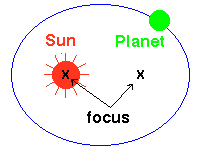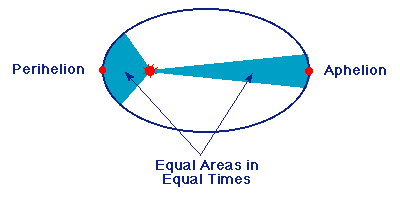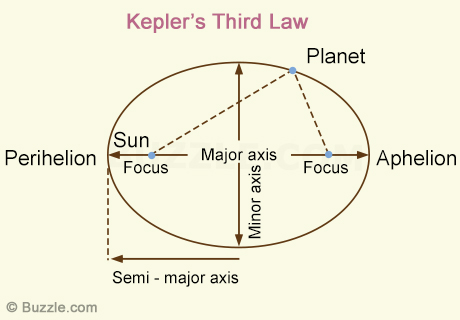
Before 1609, the scientific consensus in Europe was that the planets orbited the Earth in perfect circles; even dissenting views such as Copernican heliocentricism relied upon perfect circles to guide objects around the Sun. Johannes Kepler, however, motivated by minute errors in planetary distances discovered when attempting to construct Copernicus’ model, revolutionized astronomy with his laws of planetary motion.
First Law of Planetary Motion
Kepler’s First Law asserts that a planet’s orbit is the shape of an ellipse, and the Sun is located at one of the foci of the ellipse.

Second Law of Planetary Motion
Kepler’s Second Law states that a line connecting the planet to the Sun will “sweep out” equal areas in equal times during the planet’s orbit; this means that a planet will move faster the closer it is to the Sun and it will move slower as it goes further from the Sun.

Third Law of Planetary Motion
Although the Third Law was not published until 1618, nine years after the first two laws, it is no less significant than the preceding laws. The Third Law says that the square of a planet’s orbital period is proportional to the cube of its semimajor axis. This establishes that there is a positive relationship between how far a planet is from the Sun and how long it takes to orbit the Sun

Read what I read!
Kepler’s laws of planetary motion – Britannica
Johannes Kepler’s 3 Laws of Planetary Motion – Buzzle
Johannes Kepler: The Laws of Planetary Motion – UT Knoxville Astrophysics
